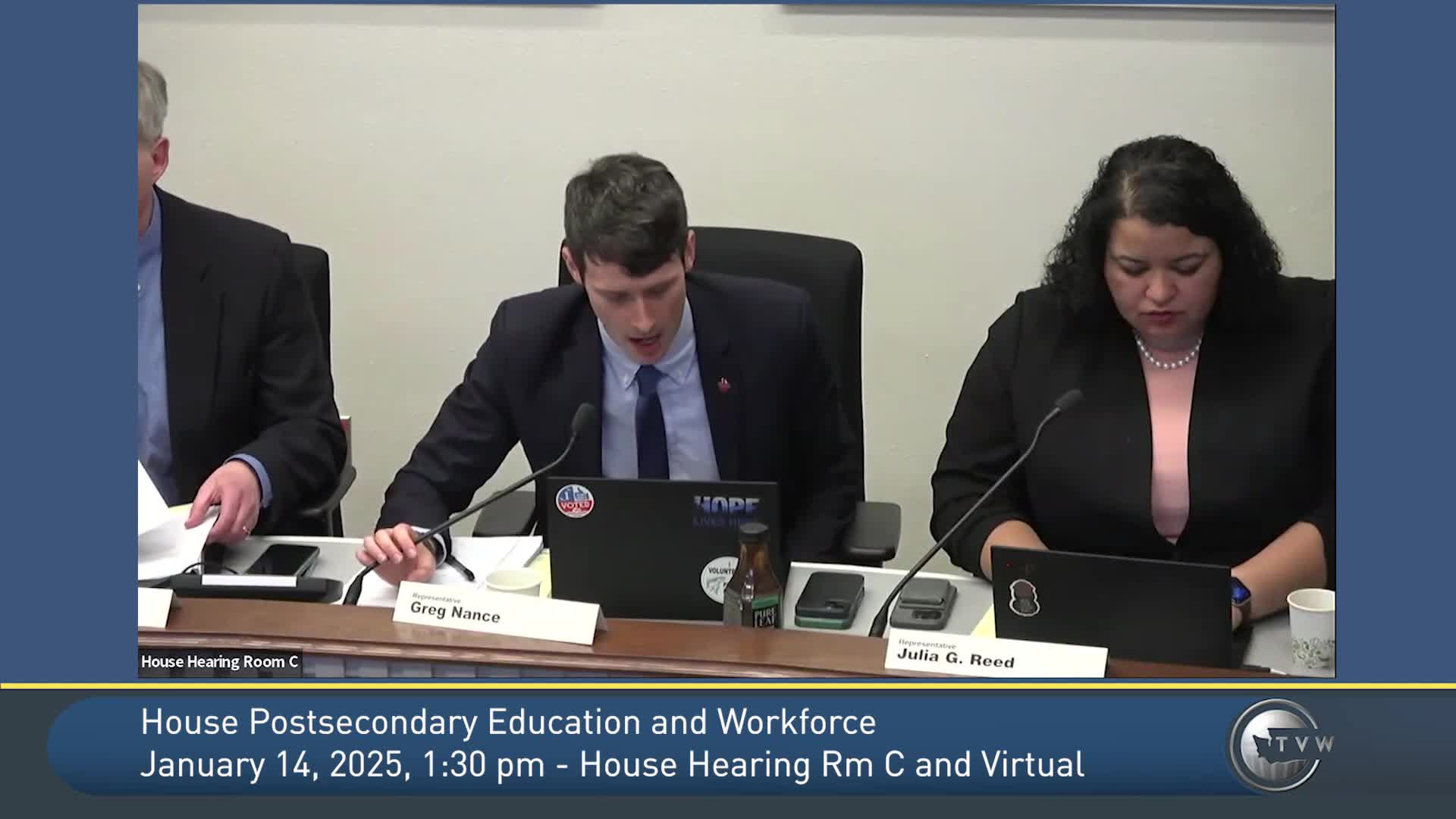JLARC: Public-utility tax credit for home energy assistance reimburses shrinking share of aid; Commerce recommends termination
January 14, 2025 | Postsecondary Education & Workforce, House of Representatives, Legislative Sessions, Washington
This article was created by AI summarizing key points discussed. AI makes mistakes, so for full details and context, please refer to the video of the full meeting. Please report any errors so we can fix them. Report an error »

The Joint Legislative Audit and Review Committee reported that Washington utilities increased home energy assistance to low-income customers while a state public-utility tax credit that reimburses up to 50% of such assistance pays a shrinking portion of those costs and likely does not drive utility assistance decisions.
Pete Van Moorsil, staff to JLARC, said the public-utility tax credit reimburses up to 50% of energy assistance utilities provide to low-income customers, but the total credit is capped at $2,500,000 per year and is allocated by the Department of Revenue to about 60 utilities in proportion to federal LIHEAP dollars their low-income customers receive.
JLARC found that utilities’ energy assistance increased 42% from roughly $53.6 million in 2018 to about $76.1 million in 2023, while the $2.5 million cap meant the credit reimbursed a declining share of assistance (from about 4.7% in 2018 to 3.3% in 2023). JLARC concluded the credit likely does not accomplish the inferred objective of incentivizing utilities to provide more energy assistance; about half of utilities that receive LIHEAP do not claim the credit.
Van Moorsil explained statutory changes since the credit’s enactment: statutes now require utilities to provide energy assistance in some cases and the Clean Energy Transformation Act (CETA) broadened the definition of low-income households; Senate Bill 295 (2021) requires investor-owned utilities to offer discounts and allows cost recovery mechanisms tied to low-income assistance increases.
JLARC recommended the Legislature state public-policy objectives for the preference and, if the objective is encouraging greater utility assistance, consult the Department of Commerce to identify changes to achieve that goal; if the objective is tax relief, the Legislature should clearly categorize the preference as such.
The Department of Commerce response included in JLARC materials recommended terminating the credit, citing statutory changes and limited uptake and impact. JLARC staff noted the allocation formula produces very small allocations for some small utilities—amounts as low as roughly $14–$16—making the credit administratively impractical for those utilities to claim.
Committee members asked whether JLARC examined unmet need for assistance; Van Moorsil said Commerce’s energy assistance report documents county-level measures of energy burden, but the JLARC preference analysis could not match which households benefited from the credit versus broader assistance.
Pete Van Moorsil, staff to JLARC, said the public-utility tax credit reimburses up to 50% of energy assistance utilities provide to low-income customers, but the total credit is capped at $2,500,000 per year and is allocated by the Department of Revenue to about 60 utilities in proportion to federal LIHEAP dollars their low-income customers receive.
JLARC found that utilities’ energy assistance increased 42% from roughly $53.6 million in 2018 to about $76.1 million in 2023, while the $2.5 million cap meant the credit reimbursed a declining share of assistance (from about 4.7% in 2018 to 3.3% in 2023). JLARC concluded the credit likely does not accomplish the inferred objective of incentivizing utilities to provide more energy assistance; about half of utilities that receive LIHEAP do not claim the credit.
Van Moorsil explained statutory changes since the credit’s enactment: statutes now require utilities to provide energy assistance in some cases and the Clean Energy Transformation Act (CETA) broadened the definition of low-income households; Senate Bill 295 (2021) requires investor-owned utilities to offer discounts and allows cost recovery mechanisms tied to low-income assistance increases.
JLARC recommended the Legislature state public-policy objectives for the preference and, if the objective is encouraging greater utility assistance, consult the Department of Commerce to identify changes to achieve that goal; if the objective is tax relief, the Legislature should clearly categorize the preference as such.
The Department of Commerce response included in JLARC materials recommended terminating the credit, citing statutory changes and limited uptake and impact. JLARC staff noted the allocation formula produces very small allocations for some small utilities—amounts as low as roughly $14–$16—making the credit administratively impractical for those utilities to claim.
Committee members asked whether JLARC examined unmet need for assistance; Van Moorsil said Commerce’s energy assistance report documents county-level measures of energy burden, but the JLARC preference analysis could not match which households benefited from the credit versus broader assistance.
View full meeting
This article is based on a recent meeting—watch the full video and explore the complete transcript for deeper insights into the discussion.
View full meeting
